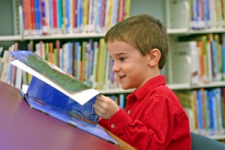Symptoms of Depression in Adolescence

There is a marked increase in the incidence of depression in the teenage years, with a peak of onset at age 15. In this age group, twice as many girls are affected as boys.
Depression in teens can be masked by outstanding school performance, school leadership, and “ideal behavior”. Depressed adolescents who cannot rely […]
Using Student Assessment Rubrics

When used as an assessment, rubrics are defined as “exemplars.” In educator terms, an exemplar is the acceptable standard for any quiz, activity or project.
While designing lessons, well established goals along with activities and assessments indicate to the student what the end result will look like.
Today’s students rarely read directions. They like things […]
Importance of Networking for Students

What has always been important is not what you know but who you know? The importance of networking has always been noted for professionals. But networking for students is as crucial.
Today, the ability to network is almost completely independent of time and place. Social networking tools, such as Facebook, LinkedIn and Twitter, have […]
Improving Attention and Concentration in Students with a Distraction Strategy

It is a known fact that an average human being cannot stay attentive for more than 30 minutes, or 45 minutes at the most. This beckons the need to develop strategies that could help in improving attention and concentration of students in your classroom. One such strategy is to use distractions.
Distractions aid in […]
Independent Reading Activities for Children

Independent reading activities can be used to develop reading comprehension in students. Teaching students to question is an important aspect helping children read. Proficient readers question what they read and ponder over the outcome, characters, information and concepts in the passage. This strategy also increases the reader’s interest in the text.
Teachers can show […]
Teaching in a Multicultural Classroom: Student Participation

People in the U.S. are encouraged from a young age to think for themselves, stand up for themselves, express themselves, and just be themselves. Assertiveness in the United States is valued. Here, “the squeaky wheel gets the grease.” These attitudes are reflected in U.S. schools.
In contrast, an appropriate saying to describe attitudes in […]
Identifying Signs of Emotional Abuse in Children

Emotional abuse, by definition, may include constant criticism, threats, or rejection, as well as withholding love, support, or guidance. This abuse may even include labeling a child with names such as stupid, idiot or dummy. Acts that reject, belittle or ignore children, terrorize them or isolate them from others can also be considered […]
Harnessing Spatial Intelligence in the Classroom

Spartial intelligence is one of eight different modalities or ways to demonstrate intellectual ability and individual style, according to Howard Gardner’s Theory of Multiple Intelligences that receives wide acceptance.
Mapping, drawing and doodling
A student with strong spatial intelligence best understands when seeing a picture. This learner perceives the world accurately and tries to recreate […]





